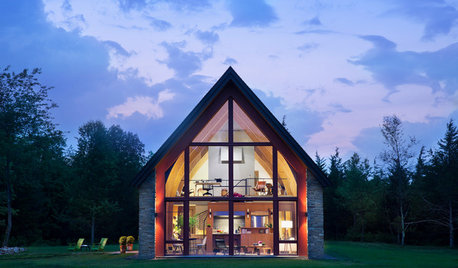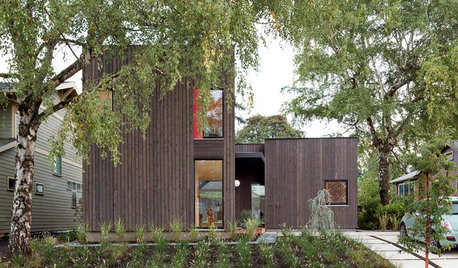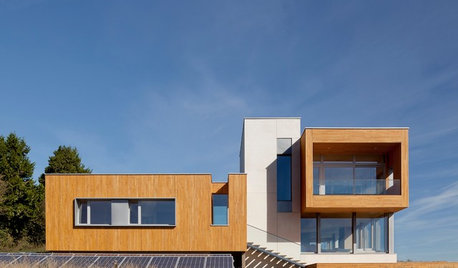Passive heat water in drums
marie99
17 years ago
Related Stories

GREEN BUILDINGHouzz Tour: Passive House in Vermont Slashes Heating Bills
Its ecofriendly, low-maintenance design leaves a family with more time to relax and enjoy the weekend home
Full Story
HOUZZ TOURSHouzz Tour: Innovative Home, Heated and Cooled by Design
Meet the Hudson Passive Project, one of the most energy-efficient home designs in the world
Full Story
GREEN BUILDINGThe Passive House: What It Is and Why You Should Care
If you don’t understand passive design, you could be throwing money out the window
Full Story
GREEN BUILDINGHouzz Tour: Passive House Principles, Active Benefits in Portland
Lower energy bills and consistent temperatures are just two of the advantages of this architect’s newly built home
Full Story
GREAT HOME PROJECTSHow to Add a Radiant Heat System
Enjoy comfy, consistent temperatures and maybe even energy savings with hydronic heating and cooling
Full Story
FLOORSIs Radiant Heating or Cooling Right for You?
Questions to ask before you go for one of these temperature systems in your floors or walls (yes, walls)
Full Story
GREEN BUILDINGInsulation Basics: Heat, R-Value and the Building Envelope
Learn how heat moves through a home and the materials that can stop it, to make sure your insulation is as effective as you think
Full Story
GREAT HOME PROJECTSHow to Add a Solar Water Heater
Lower energy bills without a major renovation by putting the sun to work heating your home’s water
Full Story
GREEN BUILDINGSunlight Used Right: Modern Home Designs That Harness Solar Power
Embracing passive heating principles through their architecture, siting and more, these homes save energy without skimping on warmth
Full Story
SAVING WATER11 Ways to Save Water at Home
Whether you live in a drought-stricken area or just want to help preserve a precious resource, here are things you can do to use less water
Full Story






marquisella
marie99Original Author
Related Professionals
Ashland Landscape Architects & Landscape Designers · Ballenger Creek Landscape Architects & Landscape Designers · Alpharetta Landscape Contractors · Ashburn Landscape Contractors · Athens Landscape Contractors · Bound Brook Landscape Contractors · Chesapeake Ranch Estates Landscape Contractors · Hickory Hills Landscape Contractors · McLean Landscape Contractors · Soddy Daisy Landscape Contractors · Vermilion Landscape Contractors · West Haverstraw Landscape Contractors · Westford Landscape Contractors · Whitman Solar Energy Systems · Wildomar Solar Energy Systemsstressbaby
Karen Pease
nathanhurst
marie99Original Author
nathanhurst
oakhill (zone 9A, Calif.)
nathanhurst
oakhill (zone 9A, Calif.)
nathanhurst
marie99Original Author
stressbaby
nathanhurst
stressbaby
nathanhurst
stressbaby
oakhill (zone 9A, Calif.)
nathanhurst
oakhill (zone 9A, Calif.)
barbara_b
chris_in_iowa
stressbaby
nathanhurst
barbara_b
nathanhurst
barbara_b
nathanhurst
Karen Pease
gardenerwantabe
oakhill (zone 9A, Calif.)
gardenerwantabe
stressbaby
Karen Pease
gardenerwantabe
marie99Original Author
marie99Original Author
oakhill (zone 9A, Calif.)
gardenerwantabe
stressbaby
gardenerwantabe
marie99Original Author
starfan_fr
oakhill (zone 9A, Calif.)
starfan_fr
jimmydo2
stressbaby
marie99Original Author
HU-370954004
Bill Dickerson